GAPS Basics: Sour Cream
This is part 2 in my GAPS Basics series. See part 1 Basic Bone Broth Tutorial: Why and how here.
Time and again I see people asking how to make GAPS sour cream. They want to make it and yet they are nervous that the process is complicated or tricky. Nothing could be further from the truth. This is especially true if you are already used to fermenting other dairy (or non-dairy milks). The process is very similar.
Sour cream is a delicious addition to lots of recipes. It also can be whipped and sweetened and served with fruit or as a topping for pies and other deserts. It is an important part of the GAPS milk shake that is recommended to pregnant moms and those in need of gaining weight or who are struggling with constipation. In fact if you are struggling with constipation Dr Campbell-McBride recommends that your dairy consumption be limited to sour cream and butter until the problem resolves itself. The protein in regular kefir, yogurt and cheese can be very constipating for some individuals.
There are two ways to make GAPS sour cream. You can make it with a yogurt culture or with a kefir culture. I prefer kefir because it is easier but my husband far prefers the milder flavor of the yogurt so we make both here. Either one can be used in my Yummy Cheeseburger Soup recipe that I will be posting later this week.
Kefir Sour Cream
1/4 cup kefired milk
1 qt heavy cream. raw or pasteurized
Quart Jar![]()
If the cream is raw it may be too thick and you will have to thin it out with some milk. I find that using the very thick cream I get from my farmer (it looks like taffy in the jar) I need to mix it with an equal amount of milk to make it right. Just add enough milk till it is a thick liquid. Otherwise put the 1/4 cup of finished kefir and put it into a quart jar. Top off the jar with the cream and let it sit at room temperature for 24-48 hours. If I have extras I often throw in a kefir grain or two for good measure but that isn’t necessary. It will be very thick and tangy when it is finished.
Yogurt Sour Cream
1/4 cup yogurt or yogurt starter
1 qt heavy cream raw or pasteurized
thermometer (only needed for pasteurized cream)
Container for yogurt
Yogurt incubating device *
If you are using raw cream you may skip step one in this process. Some prefer to leave their cream raw for yogurt making while others don’t want the competing bacteria from the milk. It is essential that you do step one if your cream is pasteurized. Also you may need to thin your raw cream. The cream that I get is thick like taffy and needs an equal amount of raw milk to make it the right consistency. You may need to experiment a bit to figure out what is best with your cream. You want it to be a thicker than milk pour-able liquid.
1.Pour cream it into a pot. On the stove top warm the cream over medium heat till it is 160. Be careful to not boil it or you will end up with a mess. (ask me how I know…) Then allow the cream to cool down to 115 or below.
2.Mix the heavy cream with the 1/4 cup of fresh yogurt or yogurt starter (follow instructions on the starter for how much. Use the same as for fermenting milk). Place the cream into your yogurt maker or other incubator and let it ferment for 24 hours. The incubator will bring the cream up to temperature if you are starting with cold cream in about an hour or so.
* There are many methods for keeping yogurt at the right temperature for the full 24 hours required for GAPS yogurt. I have an Excalibur dehydrator that I use. Some yogurt makers will work well but you must be careful that it doesn’t get too hot over time and kill your culture. Some replace the light in their oven with a 60 watt bulb and put the yogurt in there with the light on to ferment. Some use a heating pad wrapped around a quart jar. Some have devised contraptions with a light bulb and a cardboard box. If you don’t have the money for the dehydrator method you will have to do some experimenting to find a method that works for you and your family.
If you are using the Excalibur many have found that raw yogurt needs to ferment a bit cooler than yogurt made from pasteurized milk. I set mine at 95 instead of the recommended 115.
If you are using a yogurt maker fill the jars with water and at the end of 24 hours check the waters temp. If it is under 115 you will be fine. Otherwise you may need to install a dimmer switch on the cord to make that maker work for this kind of yogurt.
For all other methods you may try it is best if you do a first run with plain water and take the temp after 24 hours to make sure it didn’t get too hot. This will prevent wasting milk on a failed fermenting attempt.
Please read these posts to learn what changes I have made in my yogurt fermenting.
I also use a Pickl-It for making Kefir.




51 Comments
Trackbacks/Pingbacks
- Beefy Stroganoff Dairy-Free Gluten-Free | GAPS Diet Journey - […] sour cream, go for it. If you are on GAPS and can have dairy, here’s how you can make …


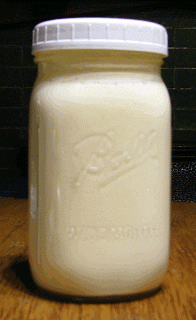







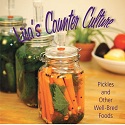
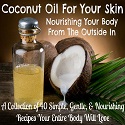
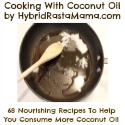



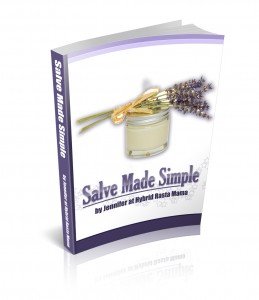


We made sour cream with yogurt first, but then tried it with kefir after reading this - much easier and it turned out great! Thanks.
I just love how easy kefiring cream is. I didn't mention in the post but it will keep for months too, unlike yogurt that only keeps for a few weeks at best in my experience.
I am so glad that you are blogging since you are such a wealth of information! I am going to try the yogurt version of sour cream.
Silly question - I made yogurt the other day and I strained it. I assume it is still ok to use as a starter?
Thanks for the compliment. Yes you can use that yogurt as long as it is less than 2 weeks old. I use a packaged starter and on GAPS making raw yogurt I would only make starter from yogurt once before doing the next batch with new starter. I don't want to waste my expensive raw milk if the starter has died and I don't want to encourage non-yogurt bacteria from the milk to proliferate too much.
I am making this today so I can make icecream!
I just made some raw cream yogurt and I can’t wait to make it into ice cream. (although is is quite divine as is yum! I had a bowl of it yesterday.)
Patty, I’m curious.. what is the difference between raw cream yogurt & the yogurt method of making sour cream in the above post?!
No difference. When NCM is talking about sour cream she is talking about cream that is fermented with yogurt cultures or kefir cultures.
I can’t work out what link brought me to your blog (yahoo forum??) but I’ve saved your pancake and coconut cake recipes…yum in advance, for when I can eat them.
I’ve made only 2 batches sour cream, but have made yogurt for years. I followed Sally Fallon’s instructions, which omits heating the cream, so it’s like your raw milk recipe (using organic pasturized cream). First batch I emptied a Biokult capsule into my 8 oz. cream container; the second batch I used less than 1 Tb. of the former batch of sour cream, into the 8 oz. container. It sits for about 24 hours in around 72* room temp, and voila, sour cream. No muss, no fuss. However, it’s very dense, almost like frozen ice cream. So next time I’ll dilute the cream first with some water, as you suggest.
I incubate my yogurt in a pot under a down jacket or doona, with a hot water bottle when the outside temperature’s cool. Foolproof.
Thanks, I’ll be back for more;-)
Hi Ahmo, Glad you found your way here.
For GAPS you need to be sure to eliminate all of the lactose in the cream and milk before consuming it. That is why you need to incubate it for at last 24 hours and in the case of yogurt it needs to stay above 90 degrees the whole time. The down jacket method will work for regular yogurt but probably won’t retain the temperature long enough for GAPS yogurt. Likewise the method you are using for making sour cream is unproven to remove all of the lactose and isn’t a recommended method for people on GAPS. Yougurt can be made in just a few hours but it still retains a lot of lactose and for GAPS you must eliminate all of the lactose. This is part of the reason why commercial yogurt is not allowed on this diet. It isn’t just about additives but is also about the extremely long incubation time.
New to your web site…what is kefir???thank you.
Kefir is a milk culture that is similar to yogurt but it contains both yeasts and bacteria and it happens at room temperature.
Hi
If I’m using the Kefir method, does the Kefir have to be homemade? Or can I use commercial organic kefir and cream to make the sour cream?
I’m not sure if it will work or not. The commercial kefir is made with a powdered starter that has fewer strains of bacteria/yeast than the stuff made using grains. It also may be less viable depending on it’s age. I haven’t ever tried to make it using commercial Kefir.
Thanks for the response
Is there any way of knowing if my sour cream turned out with enough bacteria? Is there is difference in taste/texture if it’s “dead”?
Hi! Can u clarify for me what temperature to ferment the cream at? Is it the same as yogurt (105-115ish) or is it room temp? NCM just says ‘add starter and ferment 24hrs min). I have used pasturized, heated then cooled to 110 degrees cream with live kefir added. It’s currently in my Excalibur at 110 but I’m worried that its not to be heated-all the recipes I’ve seen seem to ferment at room temp…

Thanks!!!
When using a yogurt starter culture you need to ferment between 95-115. That is the temperature that those cultures work at. At room temp the culture will be nearly dormant.
My sour cream, fermented with yogurt keeps dying in my dehydrator, set to 95 degrees. I have followed instructions about how much yogurt to use. Have tried with both store bought yogurt as starter and a batch of raw yogurt. And I’ve also tested the most recent batch that has died to see what the temperature is and it’s at 105. I have no idea what in the heck I’m doing wrong. I am fermenting a container of raw milk right next to the container of raw cream and the milk turns into yogurt, but the cream just keeps turning into a band of whey at the bottom and rotten smelling cream at the top. So expensive to keep wasting the hard to get raw cream. AND we rely on this cream on Intro Diet to replace mayonaise in several key things we eat, especially for my daughter’s school lunches. I can not figure out what in the world is going wrong! Any ideas???
My best guess is that your farmer has a cow with subclinical mastitis that you are getting the cream from. Do you leave your milk raw for the yogurt? That said when mine goes bad it has the whey at the top. Although I haven’t had cream go bad.
I don’t think that is the issue, as I also tried pasteurized milk with store bought yogurt as the starter and am having the exact same problem.
What I meant to say was that I’ve tried pasteurized cream from the store with store bought yogurt and am having the same problem.
How strange! I have no idea what is happening. 105 is not too hot for yogurt. Are you stirring it up good before you start it? Perhaps the cream is so thick that the culture isn’t dispersed well enough. When you make it with pasteurized cream you heated it to 180 first, right?
Yes, I am heating pasteurized cream to 180. And I’m also gently stirring the yogurt into either types of cream. For raw cream, not heating it at all. I don’t know about the pasteurized cream, but I am wondering if I need to bring the raw cream and yogurt to room temperature before putting into the Excalibur. It’s difficult to come by the raw cream and so disappointing as each batch doesn’t work. Last night I pulled out the Yogourmet yogurt maker, and used the cream with yogurt in it out of the fridge and put it in there. Several hours later, the outside of the jar wasn’t as warm as the Excalibur culturing batch, and I could see that it was starting to thicken, yet not have the whey separation. It is now about 14 hours into the culture and there is a bit of a separation line in the Yogourmet batch, but not like in the Excalibur batch. In the mean time, this past week there was no raw cream available from our supplier, so I had tried 1 pints of pasteurized cream from a local dairy at the cost of $8 per pint and each of those failed. So I tried again with 2 more pints and they both failed. Meanwhile, my yogurt turns out just fine. I can not imagine what the heck is going on. But it’s very frustrating.
Oh, and I tried a batch of raw kefir to make yogurt and that failed. Twice. UGH! So much food being wasted. And my 7 year old and I are on Intro Diet, so when I get multiple failed batches, it is expensive food wasted, and even worse is not having food we can eat since we are so limited as it is.
I’m not sure what you mean that you used raw kefir to make yogurt. Kefir will only make kefir.
I’m sure this is very frustrating. I wish I had some answers for you as to what is going wrong. It works for me perfectly each time. Having a small amount of whey separated does not mean that the batch is ruined but if it has a weird texture or a bad flavor that is ruined. Is it thickening at all? When mine goes bad it smells cheezy to me. Not like yogurt.
All the pictures I’ve seen online and information seemed to indicate that if whey is on the bottom rather than on the top, the culture has died. Is that not accurate. The last few batches tasted and smelled terrible. The 2 batches I have going now (one in yogourmet and one in the Excalibur) have the whey line on the bottom (Excalibur batch with a more pronounced line) but don’t smell bad. I was considering eating the 2 batches since they don’t have that rancid odor. But realizing that it might not be “live” any more.
My sour cream (when it turns out) isn’t super thick either. It is thicker than I started with, but not really solid. I think that is “normal” with home made sour cream though?
Also, the cream I start with does pour. It’s not thick like taffy But wondering if it would make sense to try mixing with a bit of milk next time. Maybe 3 cups cream and 1 cup milk.
But wondering if it would make sense to try mixing with a bit of milk next time. Maybe 3 cups cream and 1 cup milk.
And yes, I realized just now, after re-reading this post that when using kefir with cream, it should be fermented at room temperature.
Thanks for your expertise.
It will be thicker still after you refrigerate it. Mine is quite thick after it is refrigerated even if it was the thickness of store bought heavy cream when I started out.
I’m sorry this is such a struggle! You might try setting your excalibur even lower. I set mine at 95 when I’m making raw yogurt in a mason jar. I set it at 105 when making it in a pickl-it jar.
I do now know about whey indicating ruined yogurt. I haven’t ever had that happen when mine went bad. It is always at the top.
I was hesitant to set the Excalibur lower, since I usually have yogurt going at the same time.
Hey,
If using the GAPS method of making sour cream, but using Mutaflor (the German E Coli probiotic) instead of starter culture, do you know if it’s the same? Heat the cream then store at room temperature for 24hours?
Thanks!
Denise
I do not not about mutaflor and how those bacteria will work. Not every probiotic works as a yogurt starter. In fact in one experiment I exploded a jar. L-Reuteri makes a slimy snot like yogurt.
I want to make sure you are clear that yogurt needs to be kept above 95 (and below 118). It will not culture at room temperature. If you do it at room temperature you will have no idea how long it will take to eat up all the lactose. (some have reported making a very mild tasting yogurt fermenting in this manner, that is because it still has lots of lactose in it. Lactose is a sugar.)
Ok, thanks! Could you use cultured creme fraiche as a starter?
That works to make more creme fraiche but I’m not sure if it will remove all the lactose like a yogurt or kefir culture will. If you are not on GAPS however that would be a fine choice and it will culture at room temperature.
Hi there,
Can you mix raw milk cheese with milk to make sour cream? since cheese is thicker than yogurt would it thicken the milk enough, and it would have live cultures?
Thanks!
No cheese does not have the right cultures to make sour cream. Plus they are unlikely to be alive any longer either. Also cheese can be sold as raw if it was heated to 159 degrees (160 is pasteurization temp if I recall correctly). I would not call milk that was heated that hot raw but it does not count as pasteurized so that is how they get away with it.
I just made the GAPS yogurt from raw milk,(no heating) in my Excalibur and set it at 100 deg. I checked the temp midway with my outdoor temp gadge in the dehydrator it was 102 deg. I checked the yogurt temp with candy thermometer and it was just under 100 deg. It seemed a bit watery after 24 hrs so I strained some of the whey. Is it just as good probiotic-wise if I strain it? I am adding the whey to my fresh veggie juice to use it and not waste it. Can setting the temp lower (say 95 deg like you say) make thicker yogurt? How do you know if it even has good bacteria? I used Dannon natural as a starter because it only has milk as the ingredient. Am I wasting my time (probiotic-wise) to use store bought yogurt as a starter?
Raw milk yogurt will be thinner with more whey than yogurt made with heated milk. If it got thick then it has the beneficial bacteria. They are needed to cause that transformation. The bad ones will curdle it and make it not pleasant. Dannon is a fine choice for starter. I prefer to buy a powdered starter because it keeps for months in the freezer while a fresh starter from the store only keeps a few weeks reliably. Some of the probiotics will be going into the whey but some will stay in the yogurt. If you are then adding your whey to your veggie juice you are still getting it so I wouldn’t worry about missing out. I did find that it was a bit thicker at 95 (but now that I make it in a Pickl-It jar I set it at 105, 95 was too low. I think it is because the glass those jars are made from is quite thick.)
Hi there,
If you have raw cream can you just leave it out to ferment itself without adding yogurt/kefir culture or will the lactose remain?
Thanks,
Denise
Hi Denise,
It hasn’t ever been tested but I suspect lactose remains. When on GAPS you need to ferment it using kefir or yogurt cultures to remove all of that lactose and go long enough.
Hi Patty,
my raw sour cream (made with homemade kefir as per your instructions) tastes bitter and not very good. I had it at room temperature (around 68 degrees) for 26 hours. any ideas why it doesn’t taste nice and what caused the bitterness? can it be saved? i have body ecology starter i was thinking of using to try and save it.
Hi Kelly,
I don’t know what happened. Was the cream really fresh? Sometimes when I ferment old milk it gets a bitter and not pleasant taste. Was the kefir that you used to start it good? I think that once it is bitter you can’t fix it I’m sorry to say. At least I don’t know of a solution. Perhaps it would be ok in a smoothie?
Can I use grassfeed whole milk for sour cream instead of creamer. I cannot find any with no additives.
Thank you, Laura
I’m sorry but you need cream to make sour cream. If you use whole milk you will be making yogurt.
Can I thin my cream with goat milk and then use goat milk kefir to make sour cream.
Yes
Can you explain why we can have cream made with kefir on gaps diet but the actual kefir itself is not allowed until later. Do you know what probiotics are in the finished cream that make it more suitable. Many thanks for such a great helpful site. Elizabeth
Hi Elizabeth. Kefir made with cream or milk are both allowed on GAPS. They should both be introduced after dairy fermented with yogurt cultures is well tolerated. Some need the cream based dairy only because of constipation issues. Otherwise either one is fine assuming yogurt introduction went well.
I see you used 1/4 cup of Kefir, but in the GAPS book she states to use 1/2 cup, i wanted to know if you have tried it with the 1/2 cup and what was the result. Also, would it be better to use second ferment Kefir?
No I haven’t tried it with 1/2 cup.
Hi Patty,
For the combined Quart of taffy like heavy cream and Quart of raw milk did you use the 2L Pickl-it or 3L to ferment it all in?
2 L